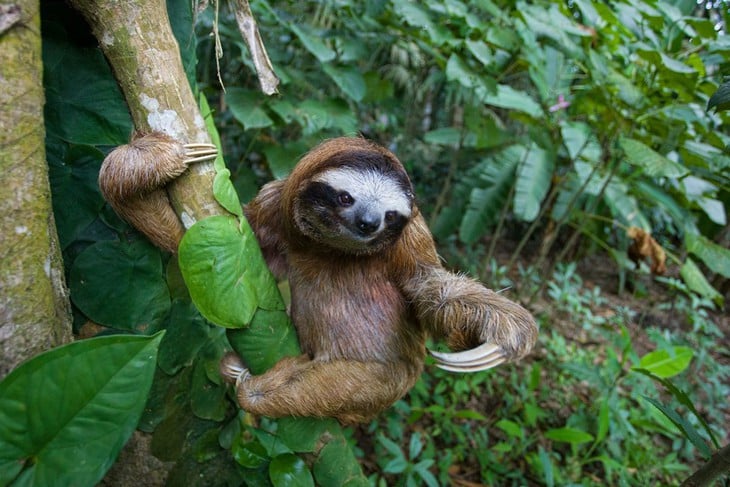
Living slowly, reclusively and consuming little energy helps sloths avoid the attention of predators, including humans - Photo: Nature Award
A study recently published in Science reveals: Thanks to their slow pace of life and secluded lifestyle in trees, sloths have survived many extinction events in the past, something their larger "brothers" could not do.
Millions of years ago, sloths were one of the most diverse groups of animals in the Americas, with animals of all sizes and lifestyles: terrestrial, burrowing, aquatic, and even as large as elephants. Fossilized skeletons of the giant ground sloth Megatherium, which was taller than an adult human, are still on display in museums today.
But about 15,000 years ago, most species of giant sloths became extinct. Scientists have long debated whether the cause was climate change, environmental change, or prehistoric human hunting.
The latest research by an international team led by Dr. Alberto Boscaini (University of Buenos Aires, Argentina) has provided a clearer view. By analyzing genetic data and body size in the evolutionary tree of sloths, the team discovered: sloths have adjusted their size many times to adapt to the climate, but it was only when humans appeared and started hunting that the number of sloths decreased dramatically.
The species' sudden and dramatic decline coincided with the spread of humans across the Americas, a period when hunters were hunting large animals for food. Large, ground-dwelling sloths were obviously easy prey.
Meanwhile, the smaller, tree-dwelling sloths went largely unnoticed, which is why they have survived to this day.
Today, sloths are known for their slow movements, low metabolism, sleeping for 15-20 hours a day, and barely leaving their trees. But that “weakness” has become an effective survival weapon. Living slowly, remaining hidden, and expending little energy helps them avoid the attention of predators, including humans.
“They are extremely slow because of their low metabolism, which is a sloth's survival strategy,” said Dr Boscaini.
"We can protect what is alive, but sadly, extinct evolutionary branches cannot be brought back," said co-author Dr. Daniel Casali from the University of São Paulo (Brazil).
Today, only six species of sloths remain on Earth, scattered throughout the tropical forests of South and Central America.
"Some sloth species still survive, but many are at risk of extinction. The message is clear: action must be taken today to avoid a complete extinction, like what happened," warned Dr Boscaini.
Source: https://tuoitre.vn/loai-vat-sinh-ton-qua-30-trieu-nam-nho-bi-quyet-kho-tin-20250523211543953.htm




























![[Photo] National Assembly Chairman attends the seminar "Building and operating an international financial center and recommendations for Vietnam"](https://vphoto.vietnam.vn/thumb/1200x675/vietnam/resource/IMAGE/2025/7/28/76393436936e457db31ec84433289f72)







































































Comment (0)